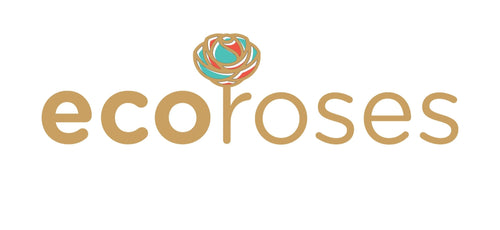For centuries, humans have gazed at the red planet and wondered: could we live there? NASA, SpaceX, and other space agencies are racing toward crewed missions to Mars, but survival on a harsh, frozen desert planet is no small task. Beyond oxygen, shelter, and water, one question emerges that blends science and poetry: will we grow flowers on Mars?
While vegetables and staple crops may be mission priorities, flowers carry psychological, cultural, and ecological importance. Growing blooms on another planet would not only mark a scientific milestone but also a symbolic one-bringing life, beauty, and hope to an alien world.
And until humanity plants the first Martian garden, you can bring Earth’s blooms into your own home by exploring elegant flowers and bouquets that remind us of the beauty we carry with us, no matter how far we travel.
🌍 Why Flowers Matter in Space
Flowers are not essential to survival like food crops, but they hold profound significance:
-
Mental Health: Astronauts report that seeing plants and flowers reduces stress and homesickness during long missions.
-
Pollination Studies: Flowering plants allow researchers to study how pollination works in microgravity.
-
Symbolism: Flowers represent life, renewal, and human culture-essential when building societies beyond Earth.
In 2016, NASA astronaut Scott Kelly grew the first zinnias aboard the ISS. The experiment wasn’t just scientific-it gave astronauts joy, as they cared for something fragile yet vibrant.
🚀 Challenges of Growing Flowers on Mars
1. Atmosphere
-
Mars has only 0.6% of Earth’s atmospheric pressure, with no breathable oxygen.
-
Plants would need sealed greenhouses with Earth-like pressure and controlled air composition.
2. Temperature
-
Average Martian temperature: -63°C (-81°F).
-
Flowers would need heated habitats or genetically modified resilience.
3. Soil
-
Martian soil (regolith) contains perchlorates, toxic to plants.
-
Flowers would require filtered soil or hydroponic systems.
4. Radiation
-
Without a protective magnetic field, Mars is bombarded by cosmic rays.
-
Flowers would need shielding-underground greenhouses or radiation-protective domes.
🌸 Flowers That Could Survive on Mars
Some flowers are naturally hardy and may adapt better to Martian conditions:
-
Zinnias: Already tested successfully on the ISS.
-
Marigolds: Pest-resistant, hardy, and used in companion planting.
-
Lavender: Tolerant of poor soils and has calming aroma.
-
Succulent-flowering plants: Capable of conserving water in arid environments.
Future space botanists may even genetically engineer flowers to withstand low light, cold, or altered gravity.
🧪 Space Botany Experiments
NASA and ESA have run several plant growth experiments in space:
-
Veggie Program (ISS): Grew lettuce, radishes, and zinnias.
-
Lada Greenhouse (Russia): Cultivated peas and wheat.
-
Chinese Chang’e-4 Mission: Sprouted cotton seeds on the Moon, though they soon died.
Each experiment brings us closer to creating ecosystems beyond Earth-where flowers may thrive alongside food crops.
🌼 The Psychological Impact of Flowers on Mars
Imagine living for years in a harsh Martian colony, surrounded by metal and dust. A simple bloom could:
-
Provide color therapy, breaking monotony.
-
Strengthen community bonds through shared gardening.
-
Connect settlers emotionally to Earth’s traditions-weddings, celebrations, memorials-all tied to flowers.
In this sense, flowers on Mars aren’t luxury-they’re necessity for human spirit.
🌺 Designing Martian Flower Gardens
Future Martian colonies could feature:
-
Hydroponic floral walls: Vertical gardens inside habitats.
-
Pressurized greenhouses: Glass domes where colonists grow food and flowers side by side.
-
Bioluminescent flowers: Genetically engineered blooms that glow, providing both light and beauty.
🌸 Cultural and Symbolic Significance
Which flowers might humanity take to Mars?
-
Roses: Universal symbols of love and memory.
-
Lotus: Represents rebirth and spirituality.
-
Sunflowers: Resilience and energy, echoing solar power.
-
National flowers: Countries may plant blooms tied to identity, carrying culture across worlds.
🌍 Lessons for Earth
Space botany teaches us about sustainability. Learning to grow flowers in extreme environments helps us develop techniques for drought-resistant crops, vertical farming, and urban gardens here on Earth.
Flowers on Mars aren’t just about exploration-they reflect humanity’s determination to carry beauty and meaning wherever we go.
🌹 Final Thoughts
So, will we grow flowers on Mars? The answer is yes-it’s only a matter of time. Science is steadily proving that flowers can adapt to microgravity, controlled atmospheres, and hydroponic systems. And when the first Martian bloom unfurls its petals, it will be more than a scientific victory-it will symbolize life, hope, and the enduring human spirit.
Until then, we can cherish Earth’s treasures by surrounding ourselves with vibrant flowers and bouquets, celebrating the beauty that has inspired us to carry blossoms into the stars.


